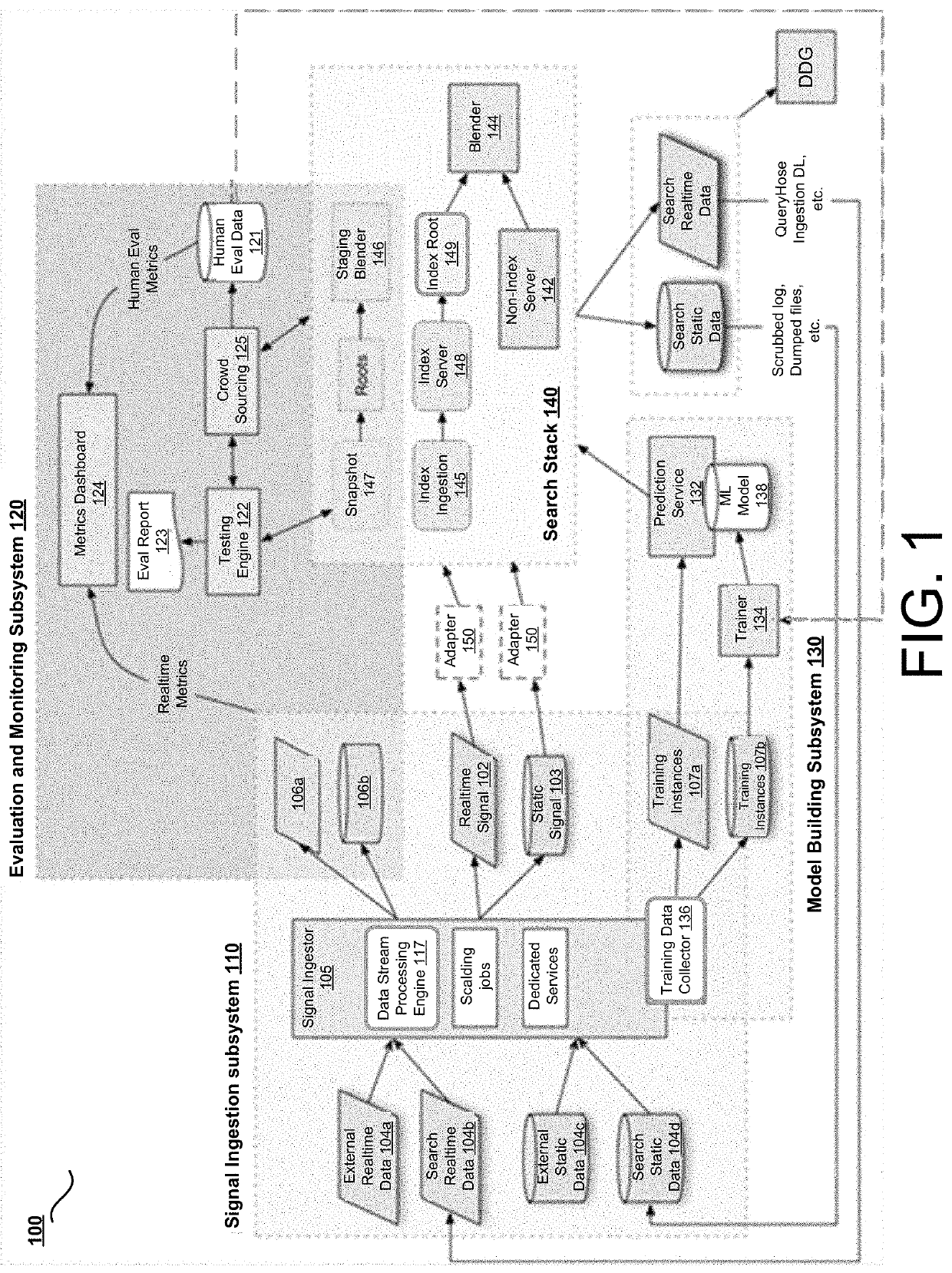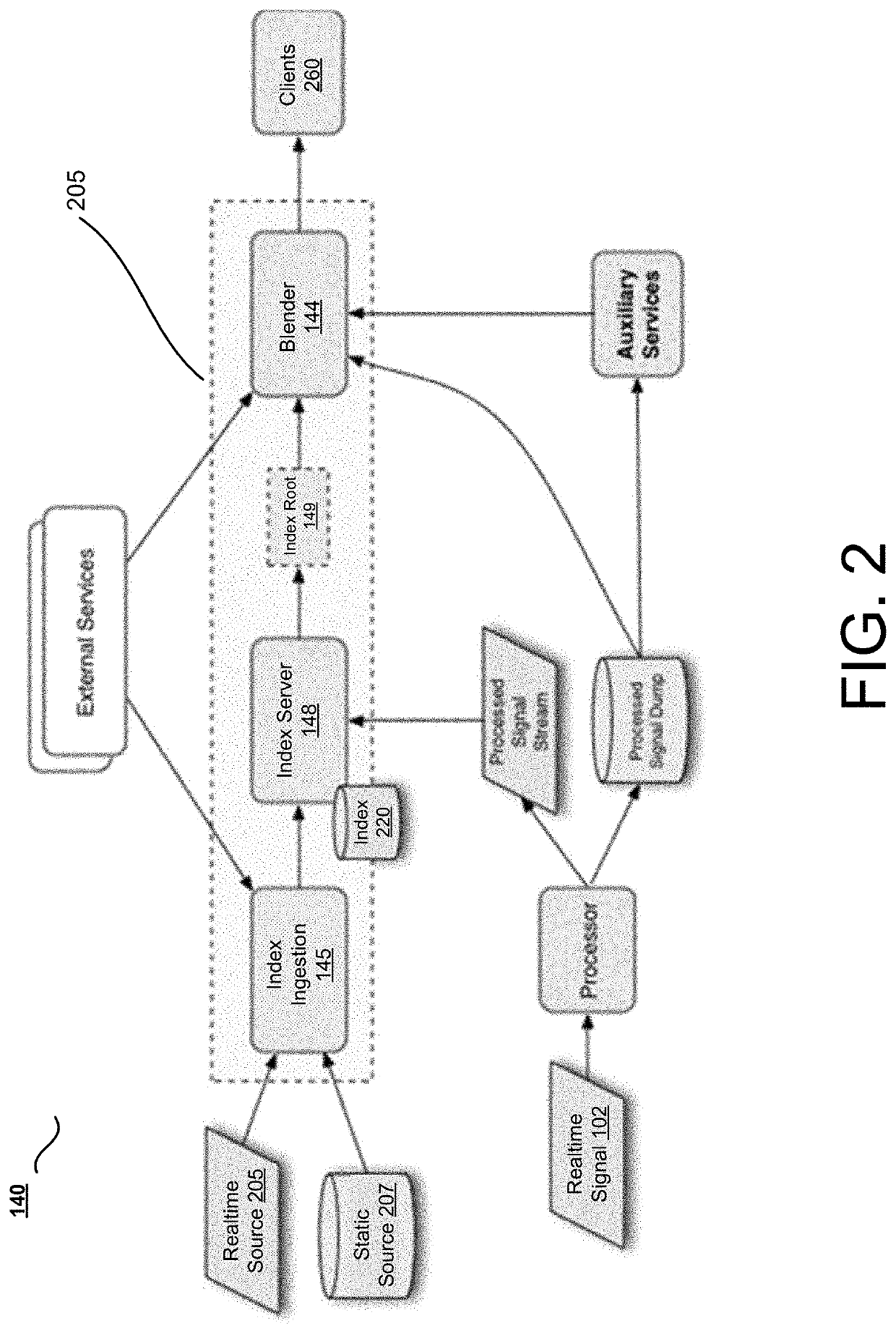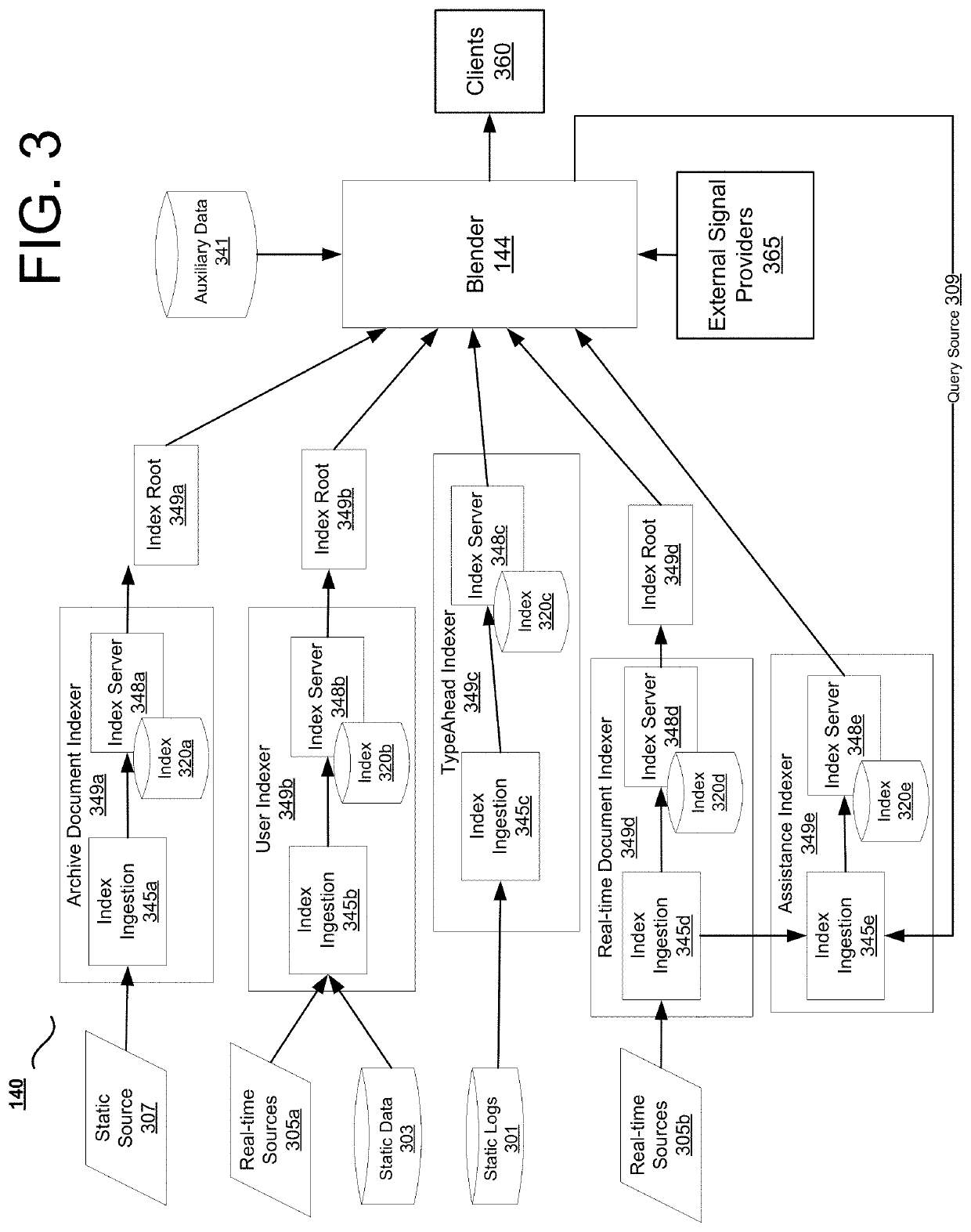Evaluation infrastructure for testing real-time content search
a real-time content and infrastructure technology, applied in the field of evaluation infrastructure for testing real-time content search, can solve the problems that conventional link-based ranking methods, like pagerank, cannot be used for posts, etc., and achieve the effects of improving insight, and reducing the cost of testing
- Summary
- Abstract
- Description
- Claims
- Application Information
AI Technical Summary
Benefits of technology
Problems solved by technology
Method used
Image
Examples
Embodiment Construction
[0016]In some implementations, a system addresses the problem of dynamically introducing new signals. Real-time search services may use many signals for different scoring / ranking processes. Introducing new signals may be difficult without a unified process for such introduction. Some of the problems may be an inflexible set-up, failure to reuse code, and the need for knowledge about the internals of a specific system to introduce new data into it. Some implementations address the use of real-time signals in scoring, ranking, and filtering results. Some implementations address evaluation of changes. Some conventional systems use an experimentation system, such as Duck Duck Goose (DDG) to run online experiments to evaluate a change to the scoring, ranking, and filtering. But such conventional experimentation systems have a long turnaround time and the results are not always easily interpretable, depending on how experiments are set up. Results are made even more difficult to interpret...
PUM
 Login to View More
Login to View More Abstract
Description
Claims
Application Information
 Login to View More
Login to View More - R&D
- Intellectual Property
- Life Sciences
- Materials
- Tech Scout
- Unparalleled Data Quality
- Higher Quality Content
- 60% Fewer Hallucinations
Browse by: Latest US Patents, China's latest patents, Technical Efficacy Thesaurus, Application Domain, Technology Topic, Popular Technical Reports.
© 2025 PatSnap. All rights reserved.Legal|Privacy policy|Modern Slavery Act Transparency Statement|Sitemap|About US| Contact US: help@patsnap.com



